History of the Russian Orthodox Church Outside Russia from Its Beginning to the Present
PART I
The Establishment and Structure of the Russian Orthodox Church Outside of Russia until 1944/1945
Chapter 1
The Russian Civil War and the Establishment of the Supreme Ecclesiastical Administration (1919-1920)
Throughout the course of history, many events and people have received from posterity the soubriquet “the Great,” while their contemporaries never attained it. Without a doubt, this held true of the events in Petrograd in 1917, when the “Great Socialist October Revolution” broke out a rather local event, which the populace of the city would hardly have noticed. During the storming of the Winter Palace, where an incompetent government with several officers’ schools and a battalion of women were “entrenched,” the theatres, restaurants and Petrograd salons were well attended, just as on any other evening.
In all probability, the entire event which took place in Petrograd on October 25th would have faded into obscurity, had the political powers in Russia, which had governed the nation from March of 1917, merely enacted a reform program that would have gained the approval of the hungry and war-weary populace primarily in the cities. (The rural population accepted whatever was decided in the cities). The Bolshevist decrees and declarations on peace, reform, national self-determination and so forth were not real programs, but rather promises made in order to mobilize the people to side with the new rulers. That, despite these promises, the Bolsheviks did not succeed in converting the population to its “new politics” is apparent in the election of representatives to the Constituent Assembly on 25 November/8 December 1917. The Socialist and Social Democratic parties received 62% of the vote, the Bolsheviks 25%, and the Citizens 13%. Of the 715 delegates, only 183 were Bolsheviks, who nonetheless claimed to represent the majority of the people. They did not represent the majority either in the spring of 1918 or in the time of Stalin and his successors. The Bolsheviks, however, were able to rely on the support of the armed forces in Petrograd; so after eight days of heavy fighting in Moscow with the aid and support of armed workers and soldiers, they prevented the elected representatives of the people from establishing parliamentary democracy in Russia in January of 1918. When within a few weeks, it became obvious that the Party dictatorship they had created would not find favor with the people, the Civil War broke out, bringing the country, already sorely racked by war and hunger, to the brink of ruin. When it was over, the nation’s industry was in a state of total collapse and a horrible famine had begun, in which millions of people perished.
The dissolution of the Assembly revealed the Bolsheviks in a clear light to the vast majority of the population. The German advance into the Baltic provinces and Ukraine resulted in the loss of this territory to Russia, inasmuch as the people of these lands were then able to avail themselves of Lenin’s decree on national self-determination. In the south of the country, the Don Cossacks proclaimed an independent Republic of the Don, which was able to survive for a mere few weeks before its suppression by the Reds, when its defensive measures dissolved amid partisan infighting.
It was certain, however, that within, at most, a few weeks after the Bolsheviks had seized power, resistance rose up everywhere in the country. In the spring of 1918, this resistance turned into the Civil War. With the support of troops from the Entente nations, the “Whites” pressed towards Moscow from the south, the west, the north and the east. In the summer of 1918, the north (General Miller), the Baltic States (General Yudenich), the Ukraine and Southern Russia (Generals Denikin and Krasnov), Siberia and eastern portions of European Russia (Admiral Kolchak), and a large part of the southern Volga Region (the Cossacks), were in the hands of anti-Bolshevist forces.
The political division of Russia into two opposing camps posed enormous problems for the Church leadership. The Church’s faithful were living on both sides of the front. Thus, it is understandable that, for most of the population, Patriarch Tikhon embodied Church unity and united all believers in one flock. “Thus, he was cherished and loved by Christians on both sides of the front. He was also the embodiment of the popular conscience. “One listened to his voice as if it came from heaven.” [1] Chrysostomus, Kirchengeschichte Rußlands der neuesten Zeit, Band 1. Munich-Salzburg, 1965. p. 131.
The great esteem in which the Patriarch [2] Rößler, Kirche und Revolution; Vinogradov, “Über einige sehr wichtige Augenblicke”; J. Chrysostomus, Gedanken; Felmy, Patriarch Tichon; Swan, Patriarch Tikhon. was held by his faithful required him to be extremely cautious politically and to avoid supporting any one party. For him, as for the whole Church, the Civil War was fratricide, the enemy, the disruption and disunity of the people. This stance, however, did not mean that the Patriarch remained silent during the victimization and persecution of the Church by the Bolsheviks. His letter of 19 January 1918, in which the Communists were anathematized, excoriated the crimes of the new rulers. On the first anniversary of the October Revolution, 25 October 1918, the Patriarch released another letter which was addressed directly to the Soviet government. It began with the words “All they that take the sword shall perish with the sword.” He continued by saying that “the streams of the blood of our brothers, who are being murdered without mercy on your command, cry out to heaven and compel us to direct this bitter word of truth to you… You have split the entire nation into opposing camps. No one feels safe; everyone lives in constant fear of house searches, plundering, expulsion, arrest, execution. The defenseless have been arrested by the thousands; they are forced to languish in prison for months; they are put to death. Not only those who have in some way opposed you are put to death but also those who are innocent and have been imprisoned by you only as hostages. These unfortunate ones have been killed out of vengeance for these crimes which were not only not committed by those of like mind with them but were often perpetrated by your own partisans or sympathizers. Bishops, priests, monks, and nuns are being executed who have in no way transgressed. You have promised freedom… The freedom which you have granted consists of the satisfaction of the baser instincts of the rabble, of freedom from punishment for murder and theft… Where is freedom of speech and the press? Where is the freedom of preaching in church? Many bold preachers have already paid for their courage with the blood of martyrdom. What else can I say? I would not have enough time to describe all the sufferings which have befallen our homeland.” [3] Chrysostomus, Kirchengeschichte, 1, pp. 365-370. The Patriarch concluded his letter with an exhortation for a turn-about and a call to use the anniversary of the Revolution to halt the shedding of blood, to put an end to acts of violence and the devastation.
This letter was a stern lecture for the new rulers, whose terror against the Church in the course of a year had attained frightening proportions. Numerous hierarchs, including Metropolitan Vladimir of Kiev, Archbishop Andronicus of Perm, Archbishop Hermogeneses of Tobolsk, Archbishop Ephraim of Selenginsk, Archbishop Basil of Chernigov, Bishop Theophanes of Solikamsk, and countless clergymen, monks, and nuns had fallen victim to the persecution. [4] Pol’sky, Mucheniki; Regel’son, Tragedia. Yet the Patriarch did not confine himself to the spoken word when defending members of the Church. When the news of the assassination of the Imperial Family reached Moscow, he served a memorial service for the slain, and then a Liturgy for the departed. In his sermon, he condemned the murder, which had, without due process of law, shed the blood of the imperial children. He emphasized that while the politics of the Emperor might be deplored, killing him could only be characterized as a criminal offense. Likewise, the Patriarch spoke out on behalf of the faithful and prayed for the innocent victims of the Revolution and the Civil War.
The aforementioned declarations did not constitute the Patriarch’s principal political stance, as his opponents frequently charged. They could not be viewed as the political creed of one of the two Parties involved in the Civil War. They were pleas that the Patriarch, as behooved the head of the Church and a priest, was compelled to issue in order to plead for an end to murder and crime throughout the country. What the Patriarch imposed on himself, he also required of his priests. On 25 September 1919, he issued a decree forbidding all clergy from becoming politically involved in any way with the Civil War. [5] Nikon, Zhizneopisanie, 6: pp. 56-58. The gravity of this decree can be measured by noting that the Patriarch refused to bless the weapons of the White Army when asked to do so. If individual bishops and priests displayed partiality, one can hardly fault the Patriarch, inasmuch as such instances occurred on the territory of the White Guard. After the outbreak of the Civil War, contact across the front for all intents and purposes ceased. There was no news from the other side. Neither was there the possibility of personal contact, nor the exchange of news along the way by journalists, nor any other means of communication.
For the Church leadership, the situation was further complicated by the fact that the Synod and the Patriarch were hindered from exercising their proper authority and were greatly distanced from the faithful. There existed only a loose relationship with the dioceses located in territories controlled by the Bolsheviks; the dioceses located in White Army territories were completely cut off. The bishops were forced to rule their dioceses autonomously. Thus, it was only natural that the bishops on each side maintained contacts with one another and strove for a joint administration to guarantee an orderly church life.
The bishops who found themselves within the territory held by Admiral Kolchak and his troops – the greater part of Siberia and the provinces of the Far East – attempted to establish just such a joint (centralized) ecclesiastical administration in Omsk. Almost nothing is known of this administration’s decisions and participants.
The second center of ecclesiastical administration existed in southern Russia and included all the dioceses within the territory controlled by Generals Denikin, Krasnov and Wrangel. This church administration was located first in Novocherkassk, then in Ekaterinodar, and finally in Novorossisk. The area stretched across the territory from Orel to Kursk on the Ukrainian border and then in an easterly and more southerly direction in a line between Orel, Voronezh, and Tsaritsyn to Astrakhan and the Caspian Sea. North of Astrakhan lay a narrow strip held by the Red Guards. It was this which prevented a connection between the regions of the White Guard in southern Russia and the region controlled by General Kolchak. Also, the ecclesiastical administrations in Omsk and Novocherkassk were unable to form any relationship with one another. [6] Russ. Prav. Ts, 1: p. 25; “Kanonicheskoe polozhenie” 10.
The ecclesiastical administration of southern Russia traces its establishment to a council that was held between 18-24 May 1919 in Stavropol. [7]Kandidov, Belogvardeiskii Sobor. This work, published in Moscow in 1930, tries to prove the counterrevolutionary character of the Stavropol Council. If one overlooks the propagandistic goal of this … Continue reading The idea of convening this council was Archpriest Shavelsky’s, and its objective was to put ecclesiastical relations in southern Russia in order. The council was convened by Archbishop Agathadorusus of Stavropol, the senior hierarch in southern Russia. Sixty-eight people took part: eleven hierarchs, twenty-two priests, one monk, and thirty-four laymen. The bishops were Agapetus, Archbishop of Ekaterinoslav and Mariupol; Agathadorus, Archbishop of the Caucasus and Stavropol; Arsenius, Bishop of Azov and Taganrog; Gabriel, Bishop of Chelyabinsk and Troitsa; Hermogenes, Bishop of Adsaya; Demetrius, Archbishop of Tavurien and Simferopol; John, Bishop of the Kuban and Ekaterinodar; Macarius, Bishop of Vladikavkaz and Mosdok; Metrophanes, Archbishop of the Don and Novocherkassk; Michael, Bishop of Alexandrovsk; and Sergius, Bishop of Sukhumi. All these bishops were on the territory of the White Russian Army of the South. All participants in the Pan-Russia Council of 1917-18 who were in southern Russia were also invited, as well as members from each diocesan council. The most important question to be deliberated by the Council was the future administrative organization of the ecclesiastical life of southern Russia. It was decided that the dioceses represented would jointly exercise autonomy, inasmuch as the Civil War made it impossible to have any normal relations with the Patriarch and the Holy Synod in Moscow. The provisional administration, to be called the “Supreme Ecclesiastical Administration” (SEA), was to have its seat in Novocherkassk, and would be under the leadership of Archbishop Metrophanes (Krasnopolsky) of Novocherkassk. His deputy was Archbishop Demetrius. In addition to them, the administration also comprised Archpriests G. Shavelsky and A. Rozhdestvensky, Count V. Musin-Pushkin and Professor P. Verkhovensky. [8] Nikon, Zhizneopisanie, 6: pp. 56-58. At the Council, a series of administrative changes were also made; the Vicariates of Kuban, Rostov, Sukhumi, and Chernomorsk were made independent dioceses. (The diocesan bishops of Stavropol, the Don and Tiflis, to whose dioceses these vicariates had belonged, protested these decisions in vain.) [9] D’Herbigny/Deubner, Evêque Russes, p. 1; erk. Ved. (1926) 15-16: p. 15.
The administrative divisions were necessary and sensible for practical reasons, in that the dioceses in question encompassed vast areas. Before 1917, out of financial considerations, the borders of each diocese were left unchanged, although the necessity of creating new dioceses was recognized by all. [10]Before the Revolution there were only 65 dioceses in the Russian Empire to which Poland and Finland belonged. In the 1950s there were 73 dioceses. Today (1980) there are 65, of which only 57 are … Continue reading It was significant that, from the point of view of canon law, the right to establish new dioceses and to change the borders of old ones, belonged to the Patriarch and the Holy Synod alone. Patriarch Tikhon’s subsequent confirmation of the Stavropol decisions was tantamount to a recognition of the legitimacy of the Council and of the SEA by the leadership of the Russian Church. The Patriarch thereby also recognized the right of the SEA to create its own dioceses for those territories that were under its jurisdictional authority. This fact was of particular significance for the later measures taken by the SEA and played an important role in the schism of the West European Diocese of Metropolitan Eulogius (Georgievsky) and of the North American Diocese of Metropolitan Platon (Rozhdestvensky).
As proof of Patriarch Tikhon’s and the Holy Synod’s recognition of the decisions of the Stavropol Council is the fact that all the resolutions concerning administrative changes in southern Russia were entered in the Synodal register of the Russian Church in Moscow, and thereby received the approbation of the Church’s leadership. [11] D’Herbigny/Deubner, Evêque Russes, p. 14/
The competence of the Council in canonical authority was neither at this point in time nor for some time thereafter, questioned by any Church authority. Only after the schism of Metropolitan Eulogius and Metropolitan Platon in 1926, was the Church Abroad’s right to create new dioceses challenged.
In November of 1919, the head of the SEA, Archbishop Metrophanes, summoned all the bishops who were on the territory of southern Russia to a Council in Novocherkassk. Metropolitan Anthony (Khrapovitsky) of Kiev and Galich was also asked to participate. Due to the fighting in and around Kiev, Metropolitan Anthony’s departure was delayed; he, therefore, requested a few days postponement of the episcopal conference. He departed Kiev on 4 November, arrived in Kharkov on 7 November, then continued on via Taganrog and the Don to Novocherkassk. In Taganrog, the Metropolitan had a brief meeting with General Denikin. [12] Nikon, Zhizneopisanie, 4: pp. 293-299.
The session in Novocherkassk lasted three days. Twelve bishops in all took part, among them Metropolitan Anthony, who, as the senior hierarch, presided over the meeting, and Archbishops George, Metrophanes, Demetrius, the Bishops Theodore, Alexis, Arsenius, Benjamin, and Hermogenes. The assembly made a number of important decisions:
- Archbishop Agapetus (Vishnevsky) of Ekaterinoslav would be retired;
- Bishop Hermogenes (Maximov) would take charge of the diocese; [13] Bishop Hermogenes emigrated to Yugoslavia and was a member of the Synod of Bishops from 1922.
- Bishop John (Levitsky) [14] Bishop John joined the Renovationists in 1923, cf. Regel’son, Tragedia. of Kuban was brought before an ecclesiastical court, and because he had violated the Church’s canons, he was retired and sent to a monastery;
- Bishop Demetrius of Uman, vicar bishop of Kiev, was to take over the diocese and was to be simultaneously elevated to the rank of the archbishop;
- The Vicariate of Uman was to be taken over by Archimandrite Vitalius (Vvedensky), whose consecration was to take place on the following Sunday.
Bishop Demetrius and Archimandrite Vitalius were sent telegrams informing them of these decisions, but they did not receive them; thus, these appointments were never carried out. The temporary administration of the diocese of Kuban, until the arrival of Bishop Demetrius, was assumed by Metropolitan Anthony, who on 6 December had learned that Kiev had been conquered by the Bolsheviks, making his return to his diocese impossible. [15] Nikon, Zhizneopisanie, 4: pp. 299-300. After the Bolsheviks had advanced to Taganrog and Rostov, Metropolitan Anthony transferred his residence to Ekaterinodar, the city to which the SEA had also moved in the meantime. The SEA remained in Ekaterinodar for a few weeks and was again moved – this time to Novorossisk, where in the course of the subsequent weeks numerous clergy, driven away by the Reds, arrived. In September of 1920, the SEA retreated with the remainder of the White Guard from Novorossisk to the Crimea. From there they undertook a journey lasting several months to Constantinople, Athens, and Mt. Athos (during which time Metropolitan Anthony returned to Russia). [16] Ibid, pp. 313-321.
In Simferopol [17] Ibid, p. 321. on the Crimea, the last session of the SEA before what proved to be its withdrawal from Russia took place in October of 1920. The session was presided over by Metropolitan Anthony and made a few more far-reaching decisions, including the consecration of Archimandrite Seraphim (Sobolev) as Bishop of Boguchar. [18] Bishop Seraphim was named head of the Russian communities in Bulgaria, cf. Ch.4, 1.1, 2 Chapter IV. More significant, however, was the decision to appoint Archbishop Anastasius (Gribanovsky) [19] Archbishop Anastasius — from 1935 Metropolitan — was Metropolitan Anthony’s successor and First Hierarch of the Church Abroad from 1936. as Head of the Russian community in Constantinople and as representative of the SEA to the Ecumenical Patriarchate. [20] D’Herbigny/Deubner, Evêques Russes, p. 14.
Furthermore, it was decided at the session that Archbishop Eulogius (Georgievsky) [21] Archbishop of Volynia and from 1922 Metropolitan, cf. Biography Section. would take over the administration of the Russian communities in Western Europe. This appointment was at the written request of Eulogius, who thereby recognized the competence of the SEA also over non-Russian territory. This decision, however, was not executed at that time because the appropriate communique did not reach Archbishop Eulogius before the evacuation. [22] D’Herbigny/Deubner, Evêques Russes, pp. 14-15. Several weeks later, on 6 November (O.S.), 1920, General Wrangel’s Supreme Command of the White Russian Army, the SEA, and more than 150,000 Russian refugees arrived in Constantinople on more than 125 ships. [23] The full text of the document is in the document section.
Thus, the first phase of the history of the SEA ended. In May of 1919, they had begun with the decision to organize a joint ecclesiastical administration. After several subsequent sessions, the final one took place in October of 1920 in Simferopol.
In the few months following its establishment, the SEA had acted as a self-sufficient and independent Church by numerous decisions, such as the creation of new dioceses, the nomination and transfer of bishops, and the restoration of relations with Sister Churches (Archbishop Anastasius being named as representative to the Ecumenical Patriarch, and Archbishop Eulogius in August of 1920, as representative of the Russian Church the World Christian Congress). It had exercised the rights that, after the Pan-Russia Council of 1917-18, only the Patriarch and the Holy Synod had the competence to do. Thus, it raised the question of whether this governing body was in violation of the Church’s canons or with the blessing and consent of the Patriarch – albeit after the fact. In retrospect, when studying the conduct of the supreme ecclesiastical leadership in Moscow regarding the decisions of the southern Russian SEA, one must come to the conclusion that the Patriarch and the Holy Synod concurred with the SEA. Had the Patriarch and the Holy Synod disapproved of the way the southern Russian Ecclesiastical Administration acted and viewed these acts as a usurpation of their authority by these bishops and as a violation of Church canons, they could have annulled all the decisions of the Stavropol Council and all subsequent councils.
The fact that the ecclesiastical leadership in Moscow did not, however, distance themselves from the decisions and resolutions of the southern Russian SEA is certainly confirmed by the entry into the Synodal Register of these decisions; this can only be viewed as the subsequent approval of the Patriarch. Official confirmation of the Stavropol Council by the Patriarch would have been extremely unwise politically, in that the Bolsheviks would have interpreted it as a collaboration by the Patriarch with the counter-revolutionary forces. This accusation could have been founded on the mere fact that the majority of bishops who had participated in the sessions of the southern Russian SEA had emigrated and thereby made their opposition to the new regime quite clear. After the establishment of the Church Abroad, the southern Russian SEA and the Stavropol Council were still denounced by the Bolsheviks as a “counter-revolutionary, White Guard union.” [24] Kandidov, Tserkovno-belogvardeiskii sobor.
If one must view the conduct of the Moscow ecclesiastical leadership as an indirect confirmation of the SEA, so can the decree Number 362 of 7/20 November 1920, issued by the Patriarch and Holy Synod, be interpreted as subsequent written approval. The date of issuance is significant: It was issued after the evacuation of the White Russian troops and the SEA had been accomplished. The emigres were on the high seas when the Patriarch and the Holy Synod composed this document, which to this day the Church Abroad considers to be its Magna Carta. The decisive section which the Church Abroad gives as the basis for their canonical existence reads: “If a diocese loses contact with the Supreme Central Ecclesiastical Administration or the same [the Patriarch and the Holy Synod in Moscow] for some reason discontinues its activities, then the diocesan bishop should unite with the bishops in neighboring dioceses in order to organize a higher body of ecclesiastical authority… If this should prove to be impossible, then the diocesan bishop should himself exercise full control.” This document [25] The full text of the document is in the document section. by the Patriarch confirmed the establishment of the SEA in southern Russia after the fact. Had it been issued in May of 1919, the Patriarch’s directive would have directly called for the establishment to the SEA. However, the question remains: What sense did this decree make in November of 1920 after the evacuation of the SEA? The answer to this can only be that therewith the Patriarch wanted to provide additional guidance for the future. The date of the decree may be explained by the fact that the ecclesiastical leadership in Moscow might have become aware of the existence of the SEA of southern Russia and its decisions only shortly before they formulated the new directive. As was already mentioned, there was no form of contact between the Whites and Reds. In consequence of the Bolshevik conquest of the territory in the south of Russia, the Patriarch might have for the first time learned of the Church events in this territory and of the hierarchs who had collaborated in those decisions and who were still living in those territories. The decree itself was issued but a few weeks after the conquest of this territory so that a connection between the decree and the church events in southern Russia cannot be ruled out.
On the other hand, the contents of this document should not be limited to the southern Russian Church Authority alone. During these weeks of turmoil, many diocesan bishops were prevented from having direct contact with the Moscow ecclesiastical leadership and were forced to reach their own decisions on many occasions. Thus, by his decree, the Patriarch legalized the activities of the ecclesiastical administration completely. There was nothing new in the Church’s situation in the autumn of 1920 [Trans.: nothing, that is, which would otherwise have precipitated this decree].
On this basis, one may find a direct connection between the ecclesial events in southern Russia during the eighteen months from May of 1919 – November of 1920, the Bolshevik conquest of this territory in the autumn of 1920, and Decree No. 362 of 7/20 November 1920, even though today we can only present conjecture concerning the real motivation for the decree since the archives of the Holy Synod (in Moscow) are not accessible to us.
References
| ↵1 | Chrysostomus, Kirchengeschichte Rußlands der neuesten Zeit, Band 1. Munich-Salzburg, 1965. p. 131. |
|---|---|
| ↵2 | Rößler, Kirche und Revolution; Vinogradov, “Über einige sehr wichtige Augenblicke”; J. Chrysostomus, Gedanken; Felmy, Patriarch Tichon; Swan, Patriarch Tikhon. |
| ↵3 | Chrysostomus, Kirchengeschichte, 1, pp. 365-370. |
| ↵4 | Pol’sky, Mucheniki; Regel’son, Tragedia. |
| ↵5 | Nikon, Zhizneopisanie, 6: pp. 56-58. |
| ↵6 | Russ. Prav. Ts, 1: p. 25; “Kanonicheskoe polozhenie” 10. |
| ↵7 | Kandidov, Belogvardeiskii Sobor. This work, published in Moscow in 1930, tries to prove the counterrevolutionary character of the Stavropol Council. If one overlooks the propagandistic goal of this book, it can be considered one of the best sources on this Council in evaluating all the Council’s acts. |
| ↵8 | Nikon, Zhizneopisanie, 6: pp. 56-58. |
| ↵9 | D’Herbigny/Deubner, Evêque Russes, p. 1; erk. Ved. (1926) 15-16: p. 15. |
| ↵10 | Before the Revolution there were only 65 dioceses in the Russian Empire to which Poland and Finland belonged. In the 1950s there were 73 dioceses. Today (1980) there are 65, of which only 57 are administered by their own ruling bishops. |
| ↵11 | D’Herbigny/Deubner, Evêque Russes, p. 14/ |
| ↵12 | Nikon, Zhizneopisanie, 4: pp. 293-299. |
| ↵13 | Bishop Hermogenes emigrated to Yugoslavia and was a member of the Synod of Bishops from 1922. |
| ↵14 | Bishop John joined the Renovationists in 1923, cf. Regel’son, Tragedia. |
| ↵15 | Nikon, Zhizneopisanie, 4: pp. 299-300. |
| ↵16 | Ibid, pp. 313-321. |
| ↵17 | Ibid, p. 321. |
| ↵18 | Bishop Seraphim was named head of the Russian communities in Bulgaria, cf. Ch.4, 1.1, 2 Chapter IV. |
| ↵19 | Archbishop Anastasius — from 1935 Metropolitan — was Metropolitan Anthony’s successor and First Hierarch of the Church Abroad from 1936. |
| ↵20 | D’Herbigny/Deubner, Evêques Russes, p. 14. |
| ↵21 | Archbishop of Volynia and from 1922 Metropolitan, cf. Biography Section. |
| ↵22 | D’Herbigny/Deubner, Evêques Russes, pp. 14-15. |
| ↵23 | The full text of the document is in the document section. |
| ↵24 | Kandidov, Tserkovno-belogvardeiskii sobor. |
| ↵25 | The full text of the document is in the document section. |

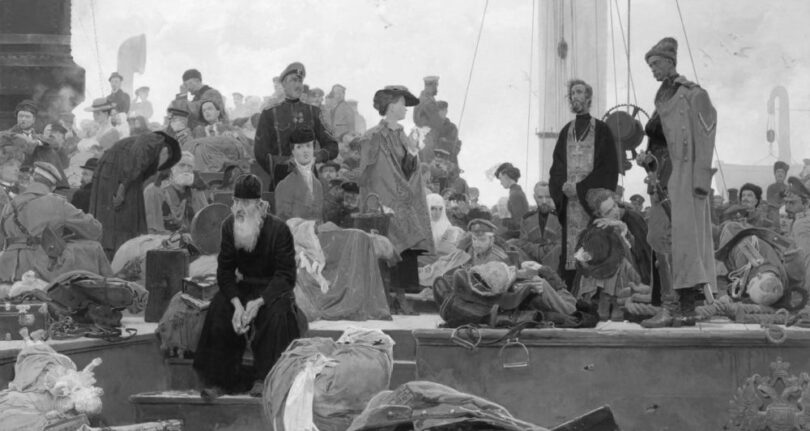
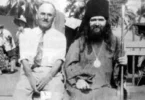
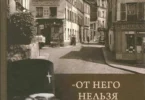

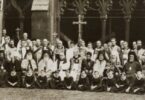



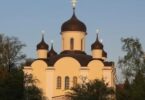

Do we have documentation where a letter from Metropolitan Serigius I, ( Stragorodsky), the 17th patriarch of Moscow and all Russia, which indicated that autonomous Orthodox Churches could be founded outside Russia and granted to the new church body the full name “The Holy Eastern Orthodox Catholic and Apostolic Church in North America” informally referred to as “The American Orthodox Church”. Noted: February 2, 1927, charging His Eminence the Most Reverend Aftimios, Archbishop of Brooklyn with responsibility and duty of caring and providing for American Orthodoxy in the special sense of Orthodox Catholic people born in America. Please inform me if you can
Blessings